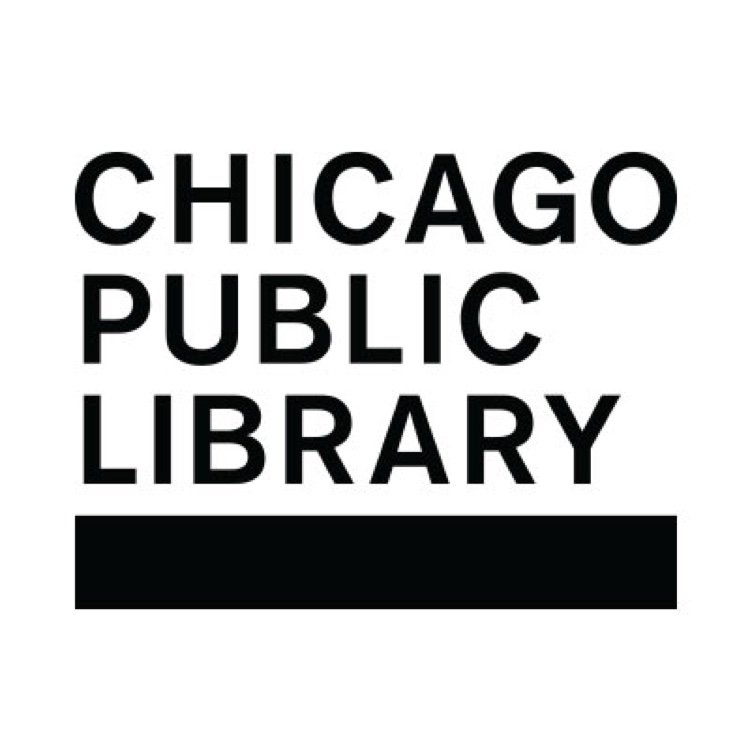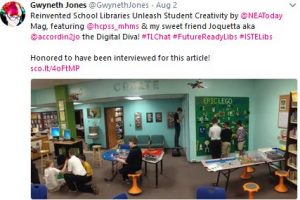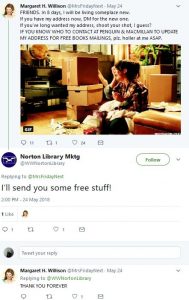How the biggest library system in the country meets patron needs, and how publishers can better connect with libraries at all levels
The more that publishers know about their audience and their industry partners, the better able you are to meet their needs and build lasting and mutually beneficial relationships. That’s why NetGalley Insights recently spoke with New York Public Library staffers from the branch level to operations.
We heard from
- Lynn Lobash: Associate Director, Readers Services
- Brandy McNeil: Associate Director of Technology, Education & Training
- Brian Stokes: Library Manager, Mulberry Street Branch
They gave us an inside look at how they learn about their patrons’ interests and needs, how librarians find out about new books, and how publishers can best engage with their librarians and community, and more.
After hearing from Lobash, McNeil, and Stokes, we encourage you to consider that in the bigger library systems, you should consider reaching out to various departments and outreach should look different for different types of contacts you’re talking to. Consider reaching branch librarians through social media influencers (for example, the vibrant Librarian Twitterverse) or pitching author visits. For the more technologically-minded publishers, consider a workshop partnership. And be sure to share larger trends you’re seeing across the industry with your library partners at the operations levels!
Branch librarians in the NYPL system are plugged in to their patrons’ interests, even though collection development happens through the BookOps team. At the branch level, staffers tend to use anecdotal experience and personal relationships as their data points. Brian Stokes, Library Manager at the Mulberry Street Branch told NetGalley Insights, “Most of our awareness of what’s new and popular simply comes through personal interest and observation of what’s circulating.” To see first-hand what the patrons at the Mulberry branch are interested in, Stokes spends a few hours each day at the public desk.
To see first-hand what the patrons at the Mulberry branch are interested in, Stokes spends a few hours each day at the public desk.
The staff at Mulberry Street are, unsurprisingly, book-centric people. According to Stokes, they are already accessing publisher resources about new releases or industry tools without any prompting or encouragement from management.
For example, the YA librarian at Mulberry Street uses NetGalley to submit LibraryReads nominations. And Stokes relied heavily on NetGalley and Edelweiss when he co-chaired the NYPL’s Best Books for Teens committee in 2017 and 2018.
Most of his direct communication with publishers comes from organizing author talks, which he considers to be one of the most effective ways to engage his librarians and the community of patrons. Librarians are hungry for more author visits!
In between individual library branches and the BookOps team is Reader Services, who often act as liaisons. They train staff to think about the needs of their particular communities and to provide readers advisory, both in-person and through displays and shelf-talkers. They hear from branch librarians and pass recommendations to the selection teams. Reader Services also recommends books directly to patrons via Twitter, Facebook, email, and best-of lists.
Lynn Lobash, Associate Director of Readers Services, told NetGalley Insights that she thinks of her job as “raising the profile of librarians as book experts.”
She works more directly with publishers, bringing her staff together for publisher book buzzes several times a year. Lobash appreciates publishers’ willingness to provide galleys and their contact information during these buzzes. She emphasizes that librarians are proud to work on behalf of all their books, not just the biggest and buzziest.
“I’d like them to know how hard librarians work to get their books into the hands of patrons who will love them, and not just the big literary fiction books they are putting money behind, but all the books from DIY to urban romance. Some people in publishing feel that libraries are a detriment to book sales and that is a shame.”
“I’d like them to know how hard librarians work to get their books into the hands of patrons who will love them, and not just the big literary fiction books they are putting money behind, but all the books from DIY to urban romance. Some people in publishing feel that libraries are a detriment to book sales and that is a shame. They show this resentment in their mark-up on ebooks in particular.”
Lobash is also open to more industry-centric communication from publishers. She’s interested to hear what trends publishers are seeing in the overall market so that she and her team can build more engaging displays and collections to help patrons find what they want.
While the Readers Services team doesn’t provide their internal data to publishers, she considers purchase orders to be the best indicator of what the NYPL is interested in.
In addition to responding to patron needs in collection development, the NYPL is dedicated to making sure that its patrons have access to digital tools that are increasingly required in jobs and to accomplish basic necessities of life. Brandy McNeil, Associate Director of Technology, Education & Training counts this as the library’s biggest asset, but acknowledges that encouraging technological education can be tricky because patrons don’t always know which skills they need.
One of the ways that the library system addresses these needs is through innovative pilot programs. These programs introduce patrons to new skills while also gauging general interest in these topics to see which should be expanded more broadly. McNeil told NetGalley Insights that every workshop or class starts out as a pilot, whose success is measured by attendance and patron assessment scores via surveys. Some recent pilot programs have included Project Code, Make It Print It Sell It and Office Readiness. While they do not share this information with publishers as a default, they are open to sharing attendance numbers and relevant demographic information with publishers on a case-by-case basis.
“The challenge is remaining present in the minds of people who are fortunate enough to not need the library that other people do need us. As such, we are still vital.”
The biggest challenge libraries face is to demonstrate to patrons that they are relevant and vital. That’s why McNeil and her team are staying up to date with AI and VR. “It will help show patrons that we are staying current with the technological changes they are experiencing…that we are readily equipped to answer their questions and guide them forward, proving that libraries will always be a need for communities.”
NYPL is uniquely positioned as a free community resource within a huge and expensive city. Brian Stokes told NetGalley Insights, “It’s virtually impossible to find somewhere in New York that doesn’t require any money from you to spend the day there. In any given week a parent could bring their baby to a professionally-run story time, check out a copy of Normal People, pick up a DVD to watch for Saturday night and send a few important work emails while their kids plays in our children’s room in 72 degree air conditioning while it’s 95 degrees outside. For free! That’s huge and something that’s definitely a rarity in 2019 Manhattan. The challenge is remaining present in the minds of people who are fortunate enough to not need the library that other people do need us. As such, we are still vital.”





 Tell us about your library’s community, and the patrons who use your services
Tell us about your library’s community, and the patrons who use your services

